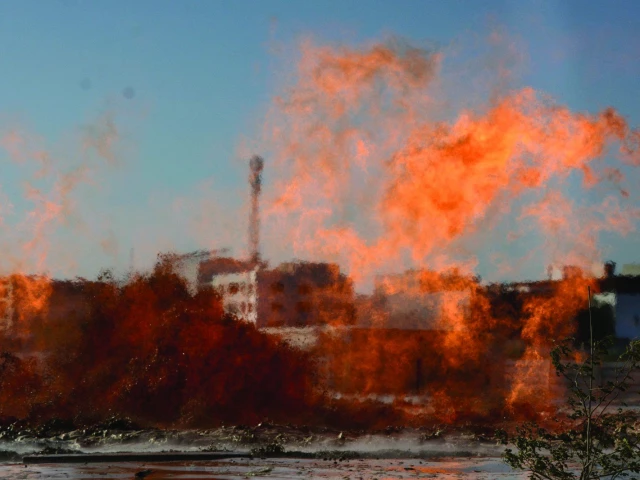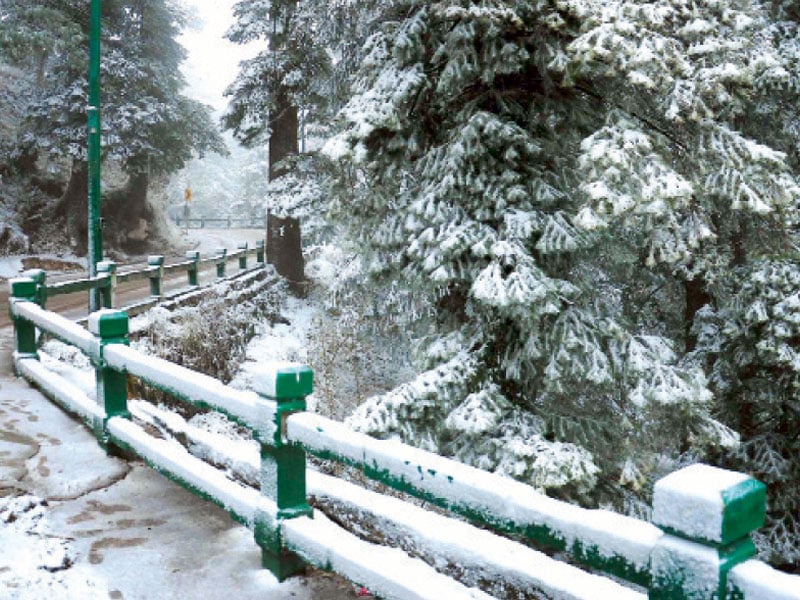Report confirms gas reserve at Korangi Creek
Experts say people nearby face health risk due to toxic chemicals at the fire site

Laboratory reports of water samples from the Korangi Creek gas leak have confirmed the presence of underground hydrocarbons (gas) and continuous gas leakage from underground faults or fractures. Chemical results indicate that the gas leak is not the result of biological activity near the surface but may be thermogenic gas reservoirs located deep below.
According to the preliminary chemical analysis report, the water contains unusually high levels of benzene, toluene, and tetrachloroethane, while o-xylene was also found in concentrations above normal levels. Despite the visible fire and bubbling water in Karachi's Korangi Creek, the hydrocarbon content in the water samples was found to be below the specified limits. However, the presence of benzene, toluene, and xylene suggests that the contamination likely stems from petroleum hydrocarbons or natural gas condensate.
These compounds are commonly found in gas fields or in areas where gas leakage occurs. Tetrachloroethene (PCE), usually used in industrial applications, can also migrate underground due to pressure changes in gas or fractured formations.
The lab report also found thermogenic signatures, indicating that the methane gas is not the result of biological activity in upper rock layers but a combination of aromatic hydrocarbons and chlorinated solvents strongly suggesting the presence of deep thermogenic gas. This gas reaching the surface is believed to have caused the fire.
Volatile Organic Compounds (VOCs) were detected in the water, indicating that underground faults or fractures are allowing the gas to migrate upward, leading to a fire that has been burning intensely for over nine days. Water samples from boreholes revealed pollution by key VOCs associated with hydrocarbon-rich formations, strongly supporting the presence of underground gas leakage.
The surface fire incident is possibly due to the accumulation of natural gas or methyl vapors that reached near-surface levels because of poor sealing or unexpected pressure releases.
According to the report, Tetrachloroethane was found at 33.42 micrograms per liter, compared to the permissible limit of 5 µg/L. Benzene was measured at 19 µg/L instead of the standard 5 µg/L. Toluene was detected at 15.26 µg/L compared to the allowed 5 µg/L. O-xylene was found at 7.08 percent exceeding the normal 5 percent.
Experts state that the elevated presence of these chemical components reinforces the possibility of substantial underground gas reserves. Chemical specialists also warn that these elements are flammable and toxic, and if they enter the atmosphere, they can pose serious health risks. Therefore, safety measures, especially the use of masks are essential in the surrounding areas.
The presence of benzene, toluene, and xylene points to pollution likely from petroleum hydrocarbons or natural gas condensate, commonly found in gas-rich areas or where gas leaks occur. Tetrachloroethene (PCE), typically used in industrial applications, may migrate underground due to pressure variations or fractured formations. Thermogenic signatures found in the lab report indicate that methane gas is not a result of biological processes in shallow rock layers, but a combination of aromatic hydrocarbons and chlorinated solvents, signaling the existence of deep thermogenic gas, which likely caused the fire at the surface.
The presence of VOCs in water further confirms that underground faults or fractures are enabling the gas to rise to the surface, fueling a fire that continues to burn intensely even after nine days. Hydrocarbon pollution in the borehole water samples supports the presence of gas leakage underground. The surface fire is likely the result of accumulated natural gas or methyl vapors reaching the surface due to poor sealing or unexpected pressure releases.






















COMMENTS (1)
Comments are moderated and generally will be posted if they are on-topic and not abusive.
For more information, please see our Comments FAQ